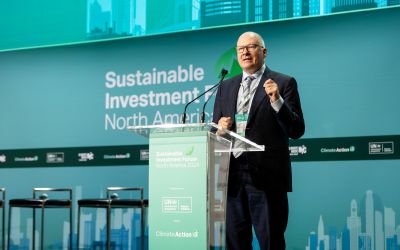Integrity Council aim to maximize ability of voluntary carbon market to to deliver on global targets
The Integrity Council publishes full criteria for assessing categories of credits and crediting methodologies, aiming to mobilize climate finance at speed and scale .

The Integrity Council for the Voluntary Carbon Market released its full global benchmark for high-integrity carbon credits, with the goal of maximizing the ability of the voluntary carbon market to support delivery of global climate targets.
Following consultation with hundreds of organizations throughout the voluntary carbon market and advice from scientific and carbon-crediting experts, the Integrity Council has completed the framework it will use to assess whether carbon credits meet its high-integrity Core Carbon Principles (CCPs).
Carbon-crediting programs can now apply for assessment by submitting evidence that they meet the CCPs through the Integrity Council’s application portal. Once approved as CCP-Eligible, programs will be able to use the CCP label on specific categories of credits that have been approved as meeting the CCPs.
Annette Nazareth, Integrity Council Chair, said: “The voluntary carbon market can play a key role in mobilizing private capital to support the 1.5-degree Paris climate target. Our CCPs and assessment criteria set a global threshold for quality which aims to unlock finance at speed and scale for projects to reduce and remove billions of tonnes of emissions that would not otherwise be viable.
The Core Carbon Principles sets out ten fundamental principles for high-quality carbon credits, based on the latest science and best practice. They require carbon credits to make a real, verifiable impact on emissions and also make a positive impact on sustainable development, and they must be issued by programs that have robust governance.
To qualify for the CCP label carbon credits must fund activities to reduce and remove emissions that are:
Compatible with a transition to net zero. The framework rules out projects that lock in fossil fuel emissions or technologies.
Permanent. Projects will have to monitor and report on emissions reductions and removals for at least 40 years where there is a risk they may be reversed – for example through wildfires – and maintain a risk-based “buffer pool” of carbon credits that can be cancelled to compensate for any reversals.
Additional. Programs must ensure that the emissions reductions or removals would not have happened without carbon credit incentives and that they were not enforced by law. They must show credits were a consideration in developing the project, and that it would not be viable without them.
Robustly Quantified. Programs must ensure that projects measure their impact on emissions conservatively to minimize the risk of overestimation.
All new projects will have to put in place robust social and environmental safeguards that deliver positive sustainable development impacts.
Find out more here.






